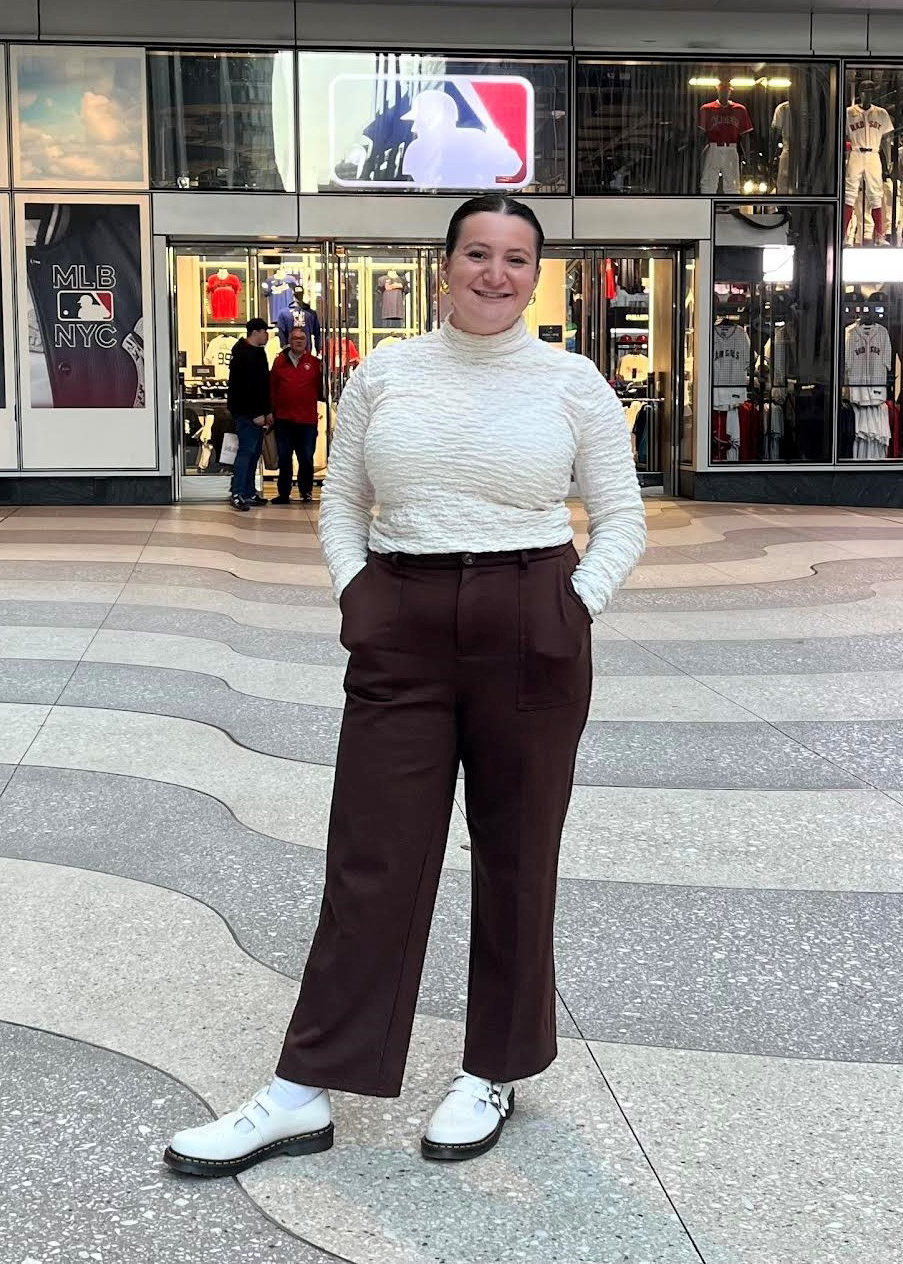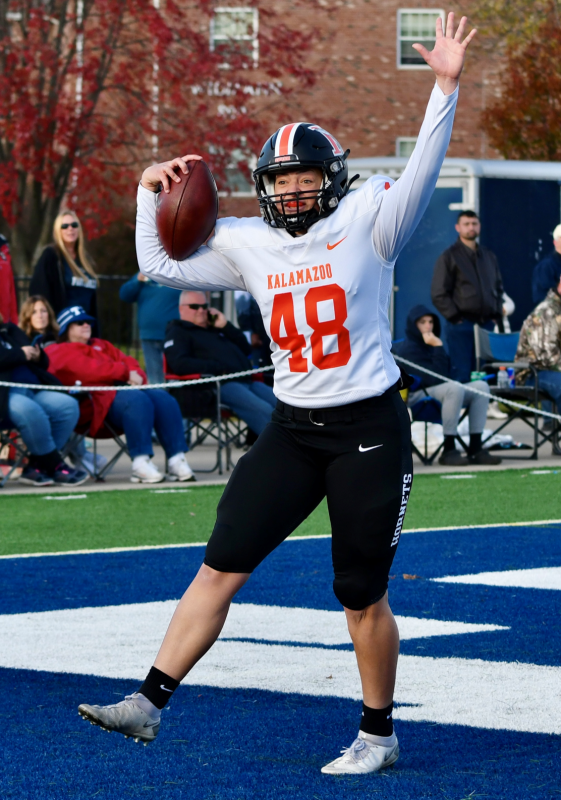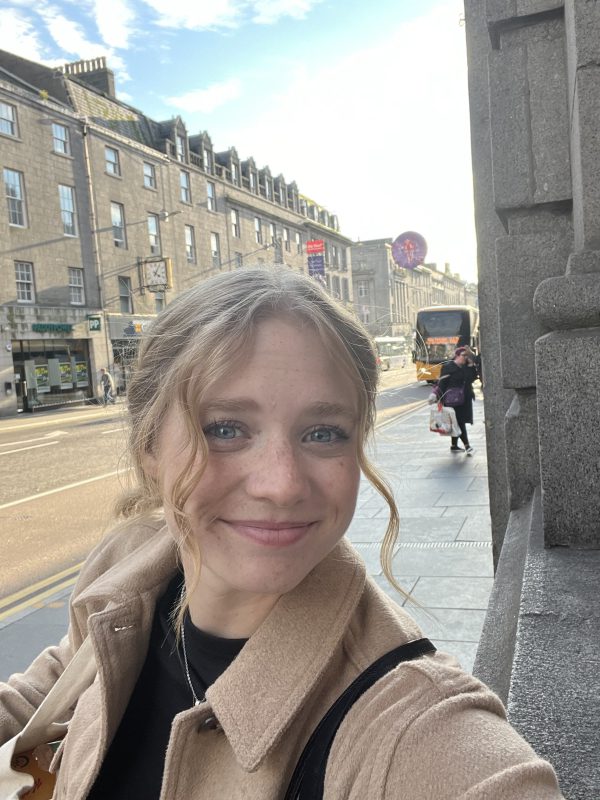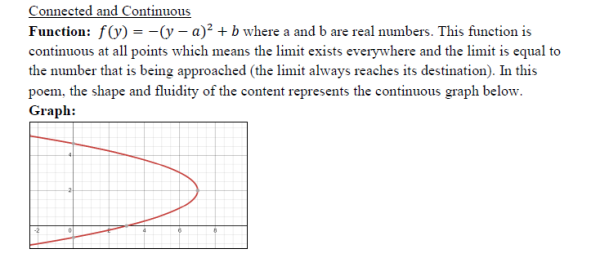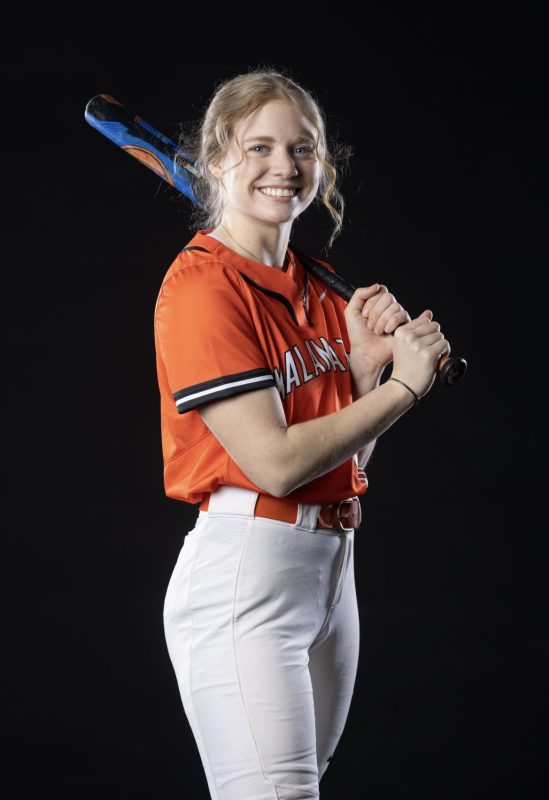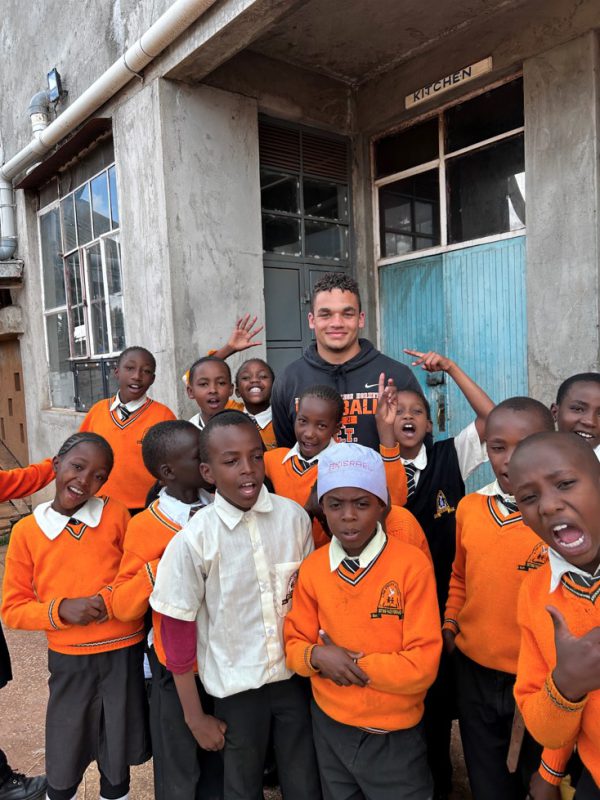The last points of the 2023 Kalamazoo College football season might be among the most significant in team history even if they didn’t get tallied as planned.
Madison Barch ’24, No. 48 in orange and black, thought she was about to attempt her last kick in college on November 11 at Trine, when—in the final minute—the snap on an extra point was bobbled, forcing her to improvise. She scrambled and unexpectedly ran wide open at the left side of the end zone with a pass from holder Josh Nichols ’24 on its way.
“I could just see the ball coming in, and I remember thinking to myself, ‘Madison, of all the times to catch a ball, you have to catch this ball right now,’” Barch said.
She had already been the first woman to score for the K football team two years prior by booting an extra point on September 4, 2021, in a game at Oberlin. But now, as Barch wrapped her fingers around the ball, she tallied a two-point conversion, recording what are believed to be the first non-kicking points by a woman at any level in the history of NCAA football.
“It was completely unplanned,” Barch said. “Coach joked around afterward asking me how much I had to pay Josh to get him to do that. I said, ‘Nothing, I swear!’ We always practiced it as a team just in case of emergencies, but it felt like an out-of-body experience. I don’t remember feeling anything when it happened. I just remember catching the ball. I then was so excited. There were so many emotions. It took all the self-control I had in me not to spike the ball like Rob Gronkowski. I didn’t think coach would be happy if we got a penalty from that.”
The Hornets lost 42-29 that day, but the team celebrated as though it had won a conference championship. Barch finished the game 3-for-3 on extra point attempts. Plus, all the young girls who showed up at K football games year after year to see Barch play had another reason to look up to her.
“I remember some of the guys running on the field and hitting my helmet, yelling, ‘Oh, my gosh!’” Barch said. “I was so excited that I almost forgot to give the ball back to the referee. I ran back, gave the ball to the referee and there was just a huddle of teammates.”
Barch’s football pursuits began in seventh grade while growing up in Utica, Michigan. Her sisters always had tried a variety of sports, and her male peers, after seeing her play soccer, encouraged her to try kicking for the football team. Her dad, Peter, was excited to let her try it, but Barch’s mom, Michele, needed to be convinced.
“I don’t know how I convinced her, but I did somehow,” Barch said. “I’m sure she was frightened, but now, she’s my number one fan by far.”
In being that top fan, Mom convinced Barch to pursue football through high school—where ESPN once showed her practicing field goals of more than 50 yards—and even into college. That led Barch to attend a prestigious prospect camp in Tennessee where she was its first-ever female invitee, and make spreadsheets that listed prospective schools along with the names and email addresses of their head coaches and special teams coaches.
“I’m so glad she pushed me through that,” Barch said. “She knows me better than I know myself.”
After hearing from a few Division II and III schools, Barch visited K and fell in love. A subsequent visit to another school didn’t go well.
“I remember sitting in the car with my dad on the way home from that visit, and I told him that I wanted to go to Kalamazoo,” Barch said. “I didn’t see myself going anywhere else. I’ve had so many good experiences over the past few years at K and it’s been life changing. I made so many good friends, so many good connections and I just don’t know where I would be if I never went to K.”
Barch still had some challenges on the road to her biggest accomplishments. Her K experience began with distance learning as a result of COVID-19 in fall 2020. The football team then attempted to move its fall 2020 season to spring 2021, but injuries forced them to cancel after two games. Barch also had a hip injury and a couple of personal illnesses along the way.
Regardless, Barch went on to elect a biochemistry major and stuck with football. She’s been on the MIAA Academic Honor Roll the past three years. She also became a President’s Student Ambassador—representing the College at formal events for community leaders, alumni and donors as an extension of the president’s office—and an Admission employee who leads prospective students on campus tours.
While she may have just wrapped up her collegiate football career, she’s looking forward to starting the next phase of her life. After graduating next spring, she would like to follow her dad’s lead into law enforcement and work in forensics, possibly starting with an internship with the Michigan State Police.
“I was in a 400-level chemistry class with Dr. Jennifer Furchak this fall called instrumental analysis, and we got to meet with an alumna from K who works in forensics in Tennessee,” Barch said. “Hearing from her and having that class was interesting. I think I would like working in ballistics and firearms analysis. Thinking about how I can trace one little shell casing back to wherever it came from seems cool to me. And yet I’m not too stressed about what I’m going to do. Whatever God has planned for me is going to work itself out.”




